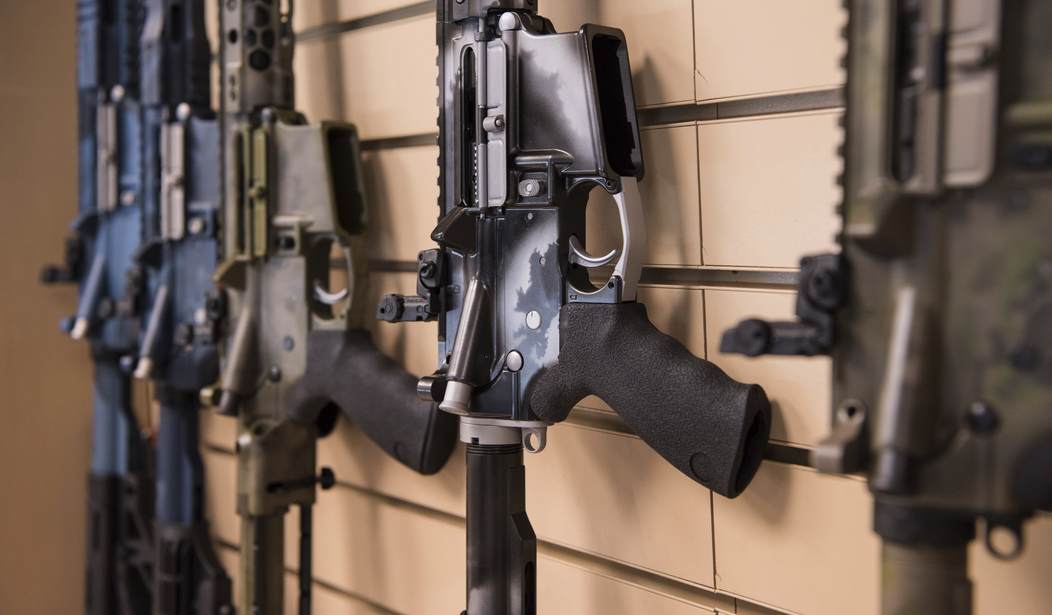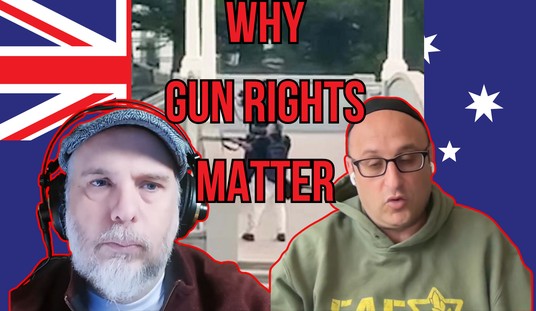While the Bruen decision has largely been a boon to Second Amendment advocates and attorneys fighting to undo unconstitutional restrictions on our right to keep and bear arms, we’ve also seen a number of judges twist the language of the Supreme Court’s ruling (and other Second Amendment jurisprudence) to uphold various gun control laws on the most specious of grounds. In Washington, D.C., for instance, U.S. District Judge Rudolph Contreras declared that “large capacity” magazines aren’t protected under the Second Amendment, claiming that the Heller decision held that “weapons that are ‘most useful in military service’ are excluded from Second Amendment protection,” adding that a “weapon may have some useful purposes in both civilian and military contexts, but if it is most useful in military service, it is not protected by the Second Amendment.”
Similarly, U.S. District Court Judge Janet Bond Arterton rejected a motion for an injunction against Connecticut’s ban on “assault weapons” and “large capacity magazines” last month, ruling that the plaintiffs “have not demonstrated that the specific assault weapons and LCMs in the Challenged Statutes are commonly sought out, purchased, and used for self-defense”; once again hinging the right to keep and bear arms exclusively on individual self-protection.
In a new article set to be published in the Wyoming Law Review, Second Amendment attorneys Chuck Michel and Konstadinos Moros lay out why these judges are so off-base, calling these bans “restrictions our ancestors never would have accepted” and shining a historical light on how legal scholars in both the Founding Era and the post-Civil War era viewed the right to own “military-style” weapons.
These arguments reveal a profound misunderstanding of our historical tradition, not to mention what arms the Second Amendment’s text covers. The arguments fail to examine what Americans of the founding generation as well as Americans of the 19th century had to say about the Second Amendment. To them, at least one other purpose was just as important as self-defense: the ability to resist tyranny. Simply put, our historical tradition stands for the proposition that the commonly owned civilian firearms of the era that are also useful in warfare are the most protected of all when it comes to firearm regulation. An overwhelming amount of historical commentary bears this out.
As Michel and Moros write, the Second Amendment in some respects is a “doomsday provision” (I often refer to it as a “in case of emergency, break glass” right) that is designed to safeguard the right of the people to resist tyranny. While the authors agree that the United States isn’t “anywhere near a situation today where violent armed resistance is necessary to protect our constitutional order” and hope that day never comes to pass, the guns “that would be brought to bear in the horrible circumstance of a tyrant upsetting our constitutional order or a foreign invader occupying our country” are the very same modern sporting rifles that some judges have concluded lie beyond the scope of the Second Amendment.
Embarrassing as it may be to admit for some polite society academics of the modern era, the Bill of Rights was written by people who had just violently overthrown their former government. They were understandably very fearful of the new government they were forming would likewise become tyrannical. Because of that, they included the Second Amendment, at least in part, as a fail-safe. They said so themselves. James Madison, for example, tried to assuage fears of a tyrannical federal army running roughshod over the people by explaining that because Americans had the “advantage of being armed” which people of other countries did not have, they could form citizen militias that could counter any regular army:
Let a regular army, fully equal to the resources of the country, be formed; and let it be entirely at the devotion of the federal government…To these would be opposed a militia amounting to near half a million of citizens with arms in their hands, officered by men chosen from among themselves, fighting for their common liberties, and united and conducted by governments possessing their affections and confidence. It may well be doubted, whether a militia thus circumstanced could ever be conquered by such a proportion of regular troops. Those who are best acquainted with the last successful resistance of this country against the British arms, will be most inclined to deny the possibility of it. Besides the advantage of being armed, which the Americans possess over the people of almost every other nation, the existence of subordinate governments, to which the people are attached, and by which the militia officers are appointed, forms a barrier against the enterprises of ambition, more insurmountable than any which a simple government of any form can admit of…14 Similarly, Alexander Hamilton added that, should a large army ever be raised, “that army can never be formidable to the liberties of the people while there is a large body of citizens, little, if at all, inferior to them in discipline and the use of arms, who stand ready to defend their own rights and those of their fellow-citizens.”
… As the Supreme Court summarized when it came to founding era views, “when the able-bodied men of a nation are trained in arms and organized, they are better able to resist tyranny.” The founders and their contemporaries would thus consider it utterly bizarre that a state government believes that the Second Amendment does not protect the types of common firearms most useful for that purpose.
The same mindset is evident in the historical record regarding gun control laws in the post-Civil War period. As Michel and Moros detail, “[b]y the end of the Civil War, repeating, cartridge-fed firearms were ubiquitous, yet never regulated or banned. Many of the most popular rifle models had magazines that held more than 10 or 15 rounds, while revolvers gave Americans 5 or 6 rounds in a compact package, both of which were orders of magnitude more capable than the single-shot flintlock rifles and pistols their parents and grandparents used. Yet despite this tremendous jump in individual firepower, no state outright banned lever-action rifles or revolvers.”
There was good reason for that. In the views of 19th-century legal scholars, those arms were precisely those afforded the most protection under the Second Amendment.
Henry Campbell Black, most famous for being the original author of Black’s Law Dictionary, wrote of the Second Amendment that “[t]he ‘arms’ here meant are those of a soldier. They do not include dirks, bowie knives, and such other weapons as are used in brawls, fights, and riots. The citizen has at all times the right to keep and bear arms of modern warfare…This right is not infringed by a state law prohibiting the carrying of concealed deadly weapons…But a law which should prohibit the wearing of military weapons openly upon the person, would be unconstitutional.” Black would clearly think it nonsensical that a modern court would analogize bowie knife carry restrictions to complete possession bans on modern rifles, which he clearly believed were the most protected arms of all.
Black was hardly alone, as this was the prevailing view of the time. Joel Bishop, writing in 1868, explained that “the [Second Amendment] protects only the right to ‘keep’ such ‘arms’ as are used for purposes of war, in distinction from those which are employed in quarrels and brawls and fights between maddened individuals.”
John Norton Pomeroy agreed, writing that “a militia would be useless unless the citizens were enabled to exercise themselves in the use of warlike weapons. To preserve this privilege, and to secure to the people the ability to oppose themselves in military force against the usurpations of government, as well as against enemies from without, that government is forbidden by any law or proceeding to invade to destroy the right to keep and bear arms…[but] this constitutional inhibition is certainly not violated by laws forbidding persons to carry dangerous our concealed weapons.”
In the 19th century, concealed firearms were seen as the biggest threat to public safety, but even then there were no longstanding or widespread laws that prohibited bearing arms in any manner whatsoever. Under the history, text, and tradition test laid out by the Supreme Court in Bruen, then, modern day laws forbidding the possession, manufacture, and sale of semi-automatic rifles and other arms arbitrarily deemed by politicians to be “assault weapons” have no comparable analogue that helps them pass constitutional muster. As the attorneys write in their conclusion:
Self-defense is undoubtedly important to the Second Amendment. The firearms affected by “assault weapon” bans are also useful for self-defense, no doubt, which is why millions of Americans own them for that purpose.57 But the amendment protects arms used for many “lawful purposes”, and one of those is, as Judge Kozinski put it, the “doomsday provision” in case our constitutional republic threatens to be toppled by tyranny, whether foreign or domestic. You do not fight tyranny with a pocket pistol. Our historical tradition demands we be allowed to be far better equipped than that. That we too often ignore this clear history in favor of a sanitized and ahistorical modern interpretation of the Second Amendment does the true nature of the right a disservice by limiting it so profoundly.
That’s absolutely right. Our Second Amendment doesn’t exist only for our day-to-day self-defense needs, but as a check on the threat of government tyranny, no matter how slight or likely that threat may be at any given moment in our nation’s history. Kudos to Michel and Moros for a thorough takedown of the illogical arguments to the contrary that we’ve seen from gun control groups and activist judges, and I encourage you to read their article in its entirety here.









